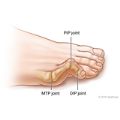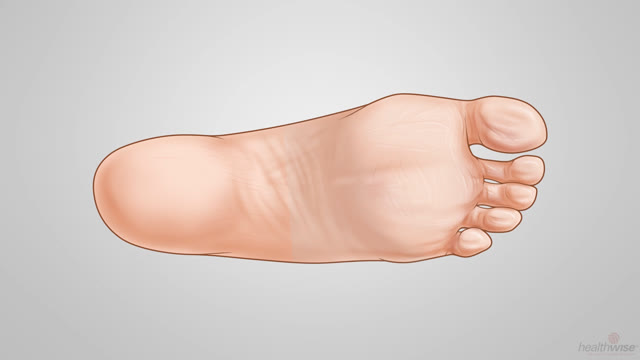Treating Diabetic Foot Problems
Topic Overview
Foot problems in people with diabetes are usually treated by keeping blood sugar levels in a target blood sugar range and by using medicine, surgery, and other types of treatment.
When foot problems develop, those problems need prompt treatment so that serious complications don’t develop. Even problems that seem minor—like calluses, blisters, cracked or peeling skin, and athlete’s foot —need to be checked by a doctor. These problems frequently occur as a result of reduced sensitivity in the feet and may precede more serious infections or foot ulcers if the cause (poorly fitted shoes, excessive weight-bearing, or dry skin) isn’t identified and corrected.
After a foot ulcer has formed, it will not heal as long as weight-bearing on the area continues. Unless your foot ulcer is infected, your doctor may put a cast on your leg to help the ulcer heal. Keeping your weight off your injured foot is very important. Even when you are at home, be careful to stay off that foot. Cushioned shoes, orthotic inserts, support with a cane or crutches, and—in extreme cases—a wheelchair and bed rest may be used to reduce weight and pressure on the feet. Foot infections need to be treated with antibiotics.
If an ulcer or infection becomes severe and the tissue in the foot dies (gangrene), one or more of the toes, part or all of the foot, and sometimes part of the leg may have to be removed (amputated).
Bone and joint deformities can develop on the feet, such as toe joint deformities (hammer toe, claw toe, mallet toe) or Charcot foot. Surgery may sometimes be needed to remove bone that is causing a deformity.
All people with diabetes should check their feet regularly for problems. Regular foot exams by health professionals are also important.
Credits
Current as ofApril 16, 2019
Author: Healthwise Staff
Medical Review: E. Gregory Thompson, MD – Internal Medicine
Adam Husney, MD – Family Medicine
Kathleen Romito, MD – Family Medicine
Karin M. Lindholm, DO – Neurology
Current as of: April 16, 2019
Author: Healthwise Staff
Medical Review:E. Gregory Thompson, MD – Internal Medicine & Adam Husney, MD – Family Medicine & Kathleen Romito, MD – Family Medicine & Karin M. Lindholm, DO – Neurology








